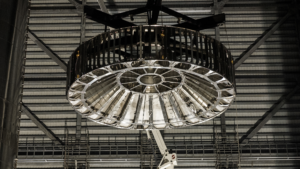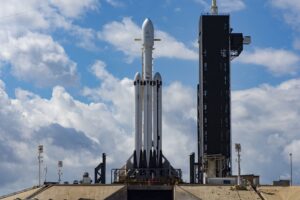
The FAA Needs More From SpaceX Before Starship Launch Approval
Right now, SpaceX is only a few weeks away from Starship IFT-3 flight hardware being complete and ready to launch. At that point, SpaceX is hoping to attempt a third flight with a few upgrades and alterations based on data from the last integrated flight test. This being said, the company still needs a launch license from the FAA which could take time.
New reports highlight SpaceX’s confidence in getting this approval soon while others mention that the FAA still requires more information from the company. This brings up concerns as to whether or not SpaceX will have to wait long after the hardware is ready to attempt the next launch. Here I will go more in-depth into progress on FAA approval, company launch date estimates, what to expect in the coming weeks, and more.
The FAA Needs More Data

Just yesterday, the FAA shared specific information on the approval process for Starship’s next flight attempt. In a response to NASASpaceflight, they said, “The return to flight of the SpaceX Starship Super Heavy vehicle requires the OFT-2 launch mishap investigation to be closed and the license modification for the OFT-3 launch to be approved.” They then said, “The SpaceX-led mishap investigation remains open and SpaceX has not yet submitted all needed information for the license modification.”
At first glance, this statement is not the most promising as far as approval speed and completion. They first mention that the last launch investigation needs to be closed which at this point, should be relatively simple. By now SpaceX has looked at all the data and is confident about what went wrong and how to ensure it doesn’t happen again. The bigger piece however is that SpaceX has not yet submitted all the needed information to the FAA.
While this sounds somewhat concerning, it’s important to point out that SpaceX and the FAA have been working together throughout this process and by now have quite a bit of experience together. Rather than SpaceX just submitting a document and waiting for approval, the process is more back and forth which would suggest that by now SpaceX has already shared the majority of necessary info to the agency. In other words, the remaining information that the FAA mentioned in the statement could be relatively small and one of the final steps. This would support a launch possibly as soon as late this month but more realistically sometime in March.
In addition, in the last week alone we have heard from a few different officials that SpaceX is expected to receive launch approval this month. For example, earlier this month during a presentation, the Vice President of Materials Engineering at SpaceX was quoted saying, “we should be ready to fly again some time in February”. To add to that, on Janurary 31st, Christian Davenport said, “The FAA is on pace to issue a Starship launch license mid to late February, I’m told, in what is shaping up to be a busy month.” For one last example, early last month Jessica Jensen, vice president of customer operations and integration at SpaceX when talking about IFT-3 said, “We’re on track for that. We’re expecting that license to come in February. So, it’s looking like Flight 3 will occur in February” she said.
All of these instances suggest that the license modification is very close to being approved by the FAA. Multiple SpaceX officials are very confident in approval sometime this month which makes a launch soon even more realistic. It would also make sense that this process is faster than the previous attempts for a few reasons. For one, less needed to be changed from IFT-2 to IFT-3 rather than IFT-1 to 2. The last time there was a long list of issues related to pad damage, the Starship vehicle itself, etc. This time around the pad held up as intended and the vehicle made it past stage separation. In the grand scheme of things, the modifications will be minimal in comparison to the past launches. All of which supports FAA approval in the next few weeks and then the third flight attempt.
Starship IFT-3

From a hardware standpoint, SpaceX is just about ready to launch again. Booster 10 and Ship 28 have already been static fired and only need minor modifications between now and the next flight. We can expect the two to be stacked relatively soon as they wait for approval. SpaceX even shared images inside the High Bay which is littered with boosters for the next few flights. If IFT-3 were to happen in the next month or so, it would establish a trend of less and less time between each launch. Ideally, the company is aiming to get this vehicle in the air as frequently as possible.
The past flights also hint at the vehicle’s improvement and how close SpaceX is to a successful flight. On the first flight, Starship destroyed the pad and didn’t make it to stage separation. On the next mission, the upgrades made both to the surrounding infrastructure and the vehicle made a night and day difference. Here, Starship executed a successful hot-stage separation, powering down all but three of Super Heavy’s Raptor engines and successfully igniting the six-second-stage Raptor engines before separating the vehicles. Soon after, following separation, the Super Heavy booster successfully completed its flip maneuver and initiated the boostback burn before it exploded. The vehicle breakup occurred more than three and a half minutes into the flight at an altitude of ~90 km over the Gulf of Mexico.
As for the upper stage, the six-second stage Raptor engines all started successfully and powered the vehicle to an altitude of ~150 km and a velocity of ~24,000 km/h. This was before the team verified a safe command destruct was appropriately triggered based on available vehicle performance data.
Arguably just as important, SpaceX reported that the water-cooled flame deflector and other pad upgrades performed as expected, requiring minimal post-launch work to be ready for upcoming vehicle tests and the next integrated flight test. By now they have already been tested and put up against static fires to prove their condition.
Elon later confirmed that the process of venting liquid oxygen from the upper stage was the cause of the eventual explosion. Specifically, the venting led to a leak and fire in the vehicle. He pointed out that had there been a payload and no need to vent, they would have continued on without issue. With all this in mind, for IFT-3 SpaceX is trying to continue the pattern of getting further each launch. That could mean a successful stage separation followed by Super Heavy completing its boost back burn and landing burn before splashing down in the ocean. For the upper stage, it would be great if it made its journey around the globe and tested the reentry process and heat shield. SpaceX is trying to get as much data as possible and new milestones during these tests provide the perfect environment to figure out what needs to be changed and what works. Based on the past flights, a fully successful IFT-3 is possible, and what the company is aiming for.
To put the company’s confidence in this vehicle in perspective, during a media briefing, Jessica Jensen said that SpaceX was, “working towards” a demonstration of propellant transfer capabilities on that flight through NASA’s Tipping Point technology program. In that test, SpaceX would transfer cryogenic propellant from a “header” tank within Starship to its main tank. This initial operation is meant to be a precursor to later tests of transferring propellant from one Starship to another in orbit.
For Artemis III, SpaceX and the Starship vehicle are expected to land humans on the Moon after docking with Orion in lunar orbit. Before it can reach the Moon, however, it needs to be filled with propellant in Earth orbit from a number of Starship tankers. As far as how many tankers are needed, Musk has said that no more than eight, and perhaps as few as four would be needed. On the other hand, at an advisory committee meeting in November, the assistant deputy associate administrator for NASA’s Moon to Mars Program, said the number of tanker launches was in “the high teens.”
No matter how many tankers, the process of transferring propellant in orbit is quite the process and something SpaceX needs to perfect with Starship prior to the Artemis missions. Once Starship successfully reaches orbit, testing this hardware and rendevous will be one of the major next steps. The company wanting to start testing this process soon is a good sign for the program.
At the end of the last test flight, SpaceX said in a statement, “Starship returned to integrated flight testing with its second launch from Starbase in Texas. While it didn’t happen in a lab or on a test stand, it was absolutely a test. What we did with this second flight will provide invaluable data to continue rapidly developing Starship. They went on to say, “With a test like this, success comes from what we learn, and this flight test will help us improve Starship’s reliability as SpaceX seeks to make life multiplanetary. The team at Starbase is already working final preparations on the vehicles slated for use in Starship’s third flight test.” At this point, we should expect to see large pre launch developments in the coming weeks as SpaceX gets closer. Stacking, flight termination system installation, etc, all are right around the corner.
Conclusion
SpaceX still needs to provide the FAA with some information before the launch license modification can be approved. On the bright side, different SpaceX officials are very confident in approval coming later this month which is a good sign for the next test. We will have to wait and see how it progresses and the impact it has on the space industry.



